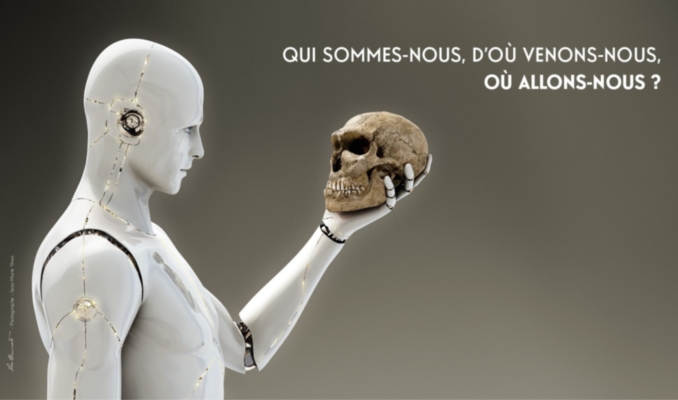History of mankind museum
Posted on sam. 29 octobre 2016 in going out

Homo Sapiens
Lately I read a book I will remember for a life time.
A true master piece of vulgarisation, Sapiens from Youval Harari opened my mind on what Homo Sapiens is as a species.
As you may guess, I highly suggest you to read this book. It will reshape the way you see the world, and replace it in
a context that you will discover as very subjective and centrist.
Not so long ago a museum dedicated to mankind opened in Paris.
Reasonably called "Museum of mankind" it is in fact not really new since it has existed since 1938.
But it was recently reopened near the Trocadero.
The museum is to invite the visitor to ask himself/herself about our identity as a species, where do we come from and where are we heading to.
The relation with the Sapiens book was obvious and it was with a lot of expectations I went to this museum.
Rather small, the museum is nonetheless intelligently structured. It focuses on few points with no dispersion.
Starting with the common anatomy we share, and our unique status in the animal kingdom,
it will progressively derive to the extreme diversity homo sapiens has produced throughout its 100 000 years old history.
This diversity is not only in physical traits but also in our cultures, languages, beliefs...
This is one special good point of the museum. Its attention to describe the homo Sapiens diversity.
Did you know that there was almost 6500 spoken languages on earth ? (Listen to this one)
That we briefly meet other homo species, bringing new genes in our pool during the process ?
We learn a lot of interesting things during the visit and enumerating them is outside of this article's scope.
My favorite part was the bust gallery representing faces from all over the world.
There was a real feeling of humility watching at these faces. It made me feel as being part of them, part of one big family
that has existed and still exist throughout space and time.
The second part of the museum focused on our "recent" history, starting with the agricultural revolution and concluding with today.
This is maybe the least interesting part of the museum.
I got the feeling that the museum has not enough space to finish what it has started, and to answer the last question: Where are we heading to ?
There is no room explaining the notion of transhumanism, our evolution through technology, the pression we apply on our environment and last but not least our extinction.
The last word may chock but we will disappear as a species. The relevant question is how and when.
It is very likely we will be the architect of our own extinction.
Either by designing a new species in our laboratories with enhanced bodies and better cognitive faculties or more simply by transforming too much
our environment.
This was simply eluded.
Last but not least, I think the museum is misplaced.
It's weird to see so much diversity explained and praised during the visit, but so few in the visitors.
It would have been interesting to open it in a less elitist place.
I spent a nice afternoon in this museum. It takes almost 2 hours to complete it and it is without a doubt a well spent time.
Although it has a taste of unfinished work it lacks a few to be at the same level as the immigration museum.
A place I may tell you about someday...